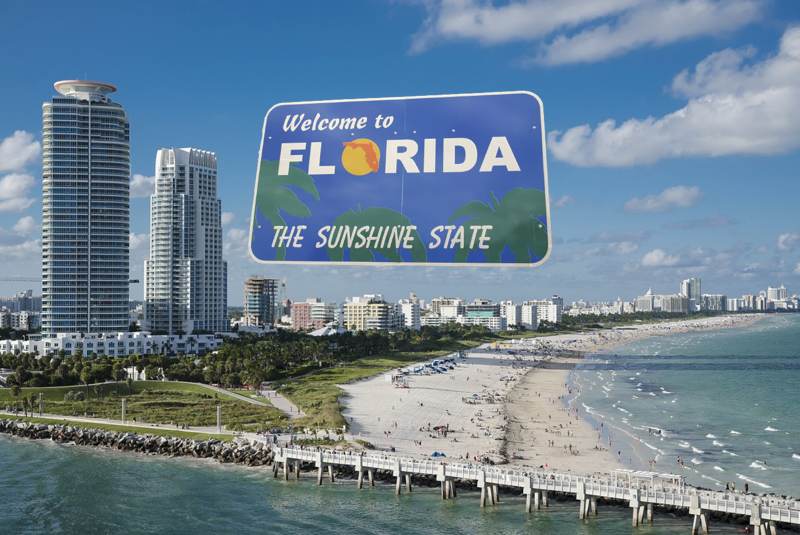Florida carriers face challenge securing reinsurance in 2023: Moody’s

Florida’s domestic property insurance carriers, as well as those coastal focused US catastrophe exposed property specialist carriers, are facing a far more challenging reinsurance renewal environment in 2023, Moody’s Investors Service has explained.
These carriers are facing sizeable reinsurance price increases at their next renewals, following hurricane Ian, the rating agency said.
At the same time they can also expect to face much tighter terms and conditions, with reinsurance markets and insurance-linked securities (ILS) specialists all likely to demand changes to retentions, attachments and other coverage terms.
Because hurricane Ian has come along at a time when reinsurance capital was already less available, partly thanks to the macro-economic effects to traditional companies balance-sheets, the prospects for 2023 are a global reinsurance market with even less capital available, given expected impacts from losses caused by the storm and trapped ILS capital at year-end.
“Securing reinsurance coverage for 2023 will be even more difficult for these companies following Hurricane Ian, Moody’s explained.
Adding that this is expected to be, “Particularly for smaller and weakly capitalized insurers,” which of course brings many Florida domestic P&C insurers to mind.
There’s a chance more Florida carriers fail, or face rating pressures, after hurricane Ian too, which could further complicate the issues the state’s insurance market faces.
“The combination of significant Ian losses, poor historical operating results, deteriorating capitalization and higher reinsurance costs may contribute to additional insolvencies among Florida-only insurers over the coming year,” Moody’s warns.
Hurricane Ian will reduce third-quarter earnings for many in the re/insurance market, but Moody’s said there is a risk of capital erosion for smaller Florida-only insurers and some reinsurers as well.
Moody’s also believes that Florida’s litigation environment and also social inflation will boost losses from hurricane Ian, further adding pressure to the marketplace.
“Florida’s highly litigious environment will make it difficult for insurers to settle claims for Hurricane Ian,” Moody’s cautioned.
Another factor is inflation, as alongside the broader inflationary environment that has already raised costs and labour prices, Moody’s says that, “Cost inflation associated with a sudden spike in demand for materials and labor
(a phenomenon known as “demand surge”) will almost certainly increase losses from Hurricane Ian.”
The reliance on reinsurance that has been a specific strategy in Florida, may prove a more challenging strategy to sustain going forwards it seems.
“Florida-only property insurers manage their hurricane exposures through the extensive use of property catastrophe reinsurance. Although these coverages bolster claims-paying resources for these firms, insurers highly reliant on reinsurance could face a liquidity squeeze if there is a lag between the payment of insurance claims and reimbursement from reinsurers.
“These companies also face the risk of a material deterioration of capital if Ian or future events significantly exceed their reinsurance limits,” Moody’s said.
Adding, “The large magnitude of Hurricane Ian’s insurance and reinsurance losses will make the cost of securing reinsurance coverage for Florida catastrophe risk substantially higher in 2023, further exacerbating challenges faced by Florida-only writers, which are heavily reliant on reinsurance programs to support their business.
“The deterioration in reported equity capital across the sector is likely to constrain available capacity for capital intensive lines like property catastrophe reinsurance over the near term.”
It seems inevitable that retentions are going to have to rise significantly in Florida, as they have fallen to extremely low levels in recent years.
Rates are going to rise further as well and there is going to have to be a balancing act of deductibles, terms and price, to find a level that the industry can afford reinsurance, while reinsurers and ILS funds feel compensated for the risks they are taking on.
Depending on how hurricane Ian’s losses play out, there could also be more pressure on loss adjustment expenses (LAE), something ILS managers and catastrophe bond investors have been very focused on since Irma.
Renewals are going to get a lot harder, even more so than seen this year.
One wildcard, that could soften the blow for Florida’s carriers is what the legislative does between now and June 1st and how much state-backed reinsurance is available in 2023.
Moody’s commentary echoes that of Florida Citizens’ CEO, who warned that reinsurance capacity will be much more limited at the next renewals, especially for lower layers of towers.
Read all of our coverage of hurricane Ian, and our analysis on the potential market losses, here.






